| Solar eclipse of December 6, 2086 | |
|---|---|
 Map | |
| Type of eclipse | |
| Nature | Partial |
| Gamma | 1.0194 |
| Magnitude | 0.9271 |
| Maximum eclipse | |
| Coordinates | 67°24′N 96°12′E / 67.4°N 96.2°E |
| Times (UTC) | |
| Greatest eclipse | 5:38:55 |
| References | |
| Saros | 153 (13 of 70) |
| Catalog # (SE5000) | 9702 |
A partial solar eclipse will occur on December 6, 2086. A solar eclipse occurs when the Moon passes between Earth and the Sun, thereby totally or partly obscuring the image of the Sun for a viewer on Earth. A partial solar eclipse occurs in the polar regions of the Earth when the center of the Moon's shadow misses the Earth.
The antumbral (annular) shadow of the Moon will pass just above the north pole of the Earth.
Related eclipses
Solar eclipses 2083–2087
This eclipse is a member of a semester series. An eclipse in a semester series of solar eclipses repeats approximately every 177 days and 4 hours (a semester) at alternating nodes of the Moon's orbit.[1]
| Solar eclipse series sets from 2083–2087 | ||||
|---|---|---|---|---|
| Descending node | Ascending node | |||
| 118 | July 15, 2083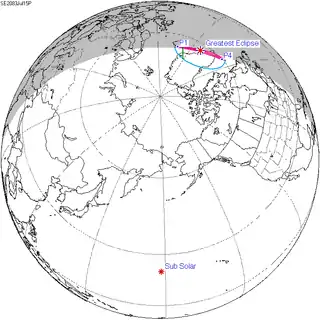 Partial |
123 | January 7, 2084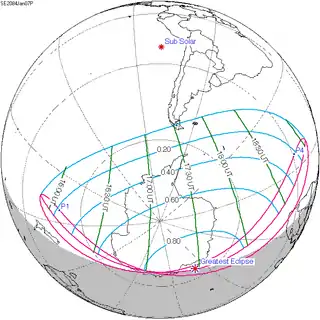 Partial | |
| 128 | July 3, 2084 Annular |
133 | December 27, 2084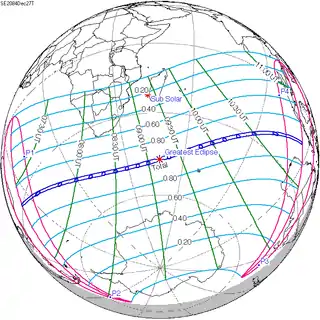 Total | |
| 138 | June 22, 2085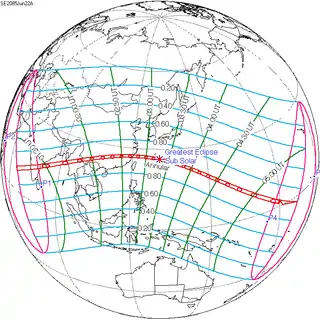 Annular |
143 | December 16, 2085 Annular | |
| 148 | June 11, 2086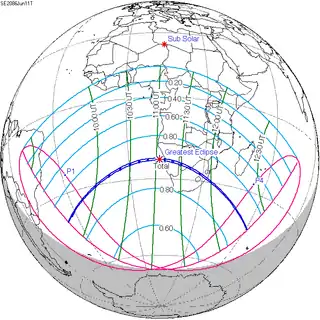 Total |
153 | December 6, 2086 Partial | |
| 158 | June 1, 2087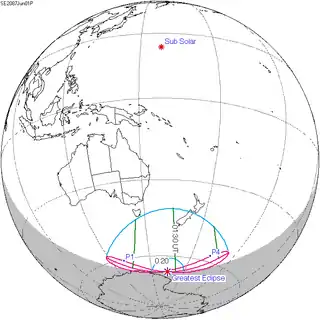 Partial | |||
Metonic series
The metonic series repeats eclipses every 19 years (6939.69 days), lasting about 5 cycles. Eclipses occur in nearly the same calendar date. In addition, the octon subseries repeats 1/5 of that or every 3.8 years (1387.94 days). All eclipses in this table occur at the Moon's ascending node.
| 21 eclipse events, progressing from south to north between July 13, 2018 and July 12, 2094 | ||||
|---|---|---|---|---|
| July 12–13 | April 30-May 1 | February 16–17 | December 5–6 | September 22–23 |
| 117 | 119 | 121 | 123 | 125 |
 July 13, 2018 |
 April 30, 2022 |
 February 17, 2026 |
 December 5, 2029 |
 September 23, 2033 |
| 127 | 129 | 131 | 133 | 135 |
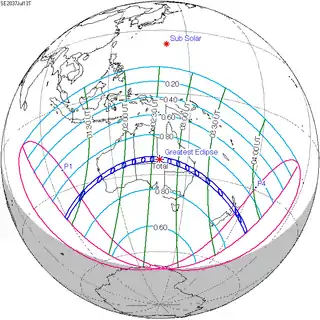 July 13, 2037 |
 April 30, 2041 |
 February 16, 2045 |
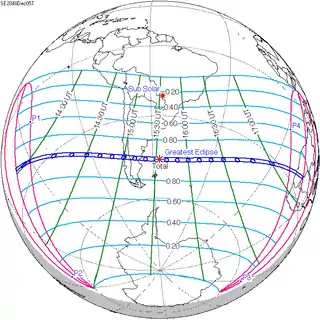 December 5, 2048 |
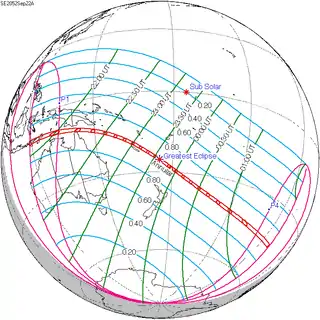 September 22, 2052 |
| 137 | 139 | 141 | 143 | 145 |
 July 12, 2056 |
 April 30, 2060 |
 February 17, 2064 |
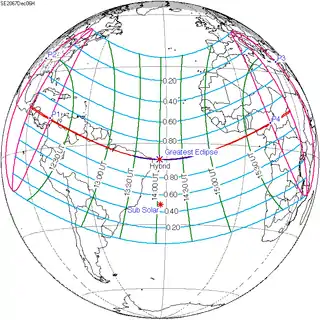 December 6, 2067 |
 September 23, 2071 |
| 147 | 149 | 151 | 153 | 155 |
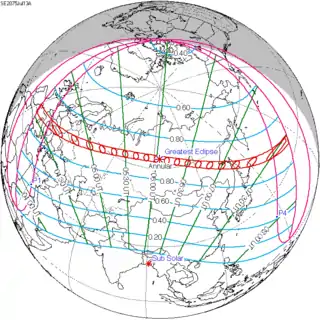 July 13, 2075 |
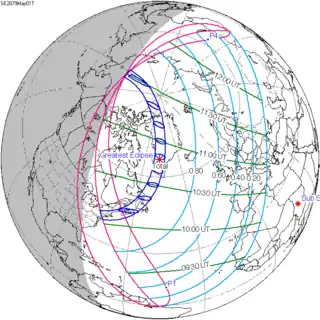 May 1, 2079 |
 February 16, 2083 |
 December 6, 2086 |
 September 23, 2090 |
| 157 | ||||
 July 12, 2094 | ||||
References
- ↑ van Gent, R.H. "Solar- and Lunar-Eclipse Predictions from Antiquity to the Present". A Catalogue of Eclipse Cycles. Utrecht University. Retrieved 6 October 2018.
External links
- Earth visibility chart and eclipse statistics Eclipse Predictions by Fred Espenak, NASA/GSFC
.jpg.webp)

